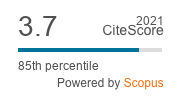Article | Open Access
Election Reform and Women’s Representation: Ranked Choice Voting in the U.S.
| Views: | 39096 | | | Downloads: | 2082 |
Abstract: Ranked choice voting first gained a foothold in the U.S. during the Progressive Movement in the 20th century as calls for electoral reforms grew. Ranked choice voting was implemented in many cities across the U.S. in both single- and multi-seat districts. But, by the 1940s it became a victim of its own success, turning the tides of the hegemonic white male leadership in U.S. legislative bodies with the election of women. Since the 1990s, ranked choice voting has once again gained traction in the U.S., this time with the focus on implementing single seat ranked choice voting. This article will build on the existing literature by filling in the gaps on how ranked choice voting—in both forms—has impacted women’s representation both historically and in currently elected bodies in the U.S.
Keywords: descriptive representation; electoral reform; fair representation voting; progressive movement; proportional representation; ranked choice voting; single transferable vote; women’s representation
Published:
© Cynthia Richie Terrell, Courtney Lamendola, Maura Reilly. This is an open access article distributed under the terms of the Creative Commons Attribution 4.0 license (http://creativecommons.org/licenses/by/4.0), which permits any use, distribution, and reproduction of the work without further permission provided the original author(s) and source are credited.



